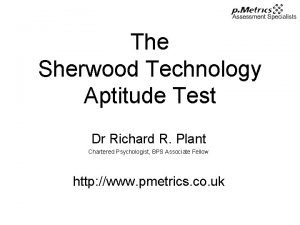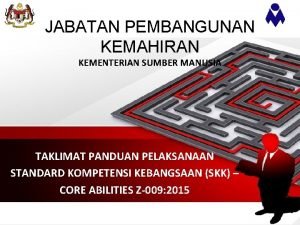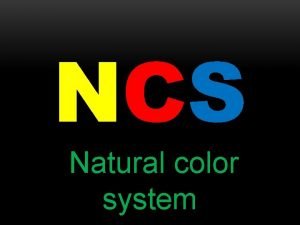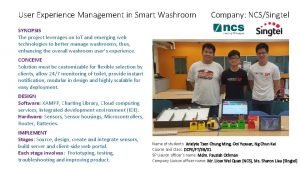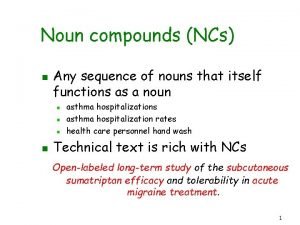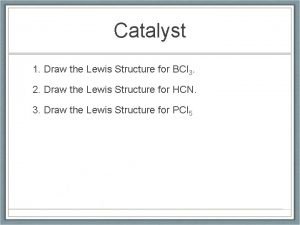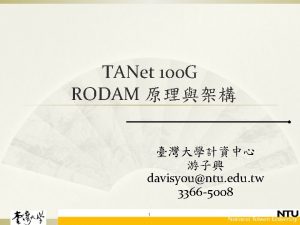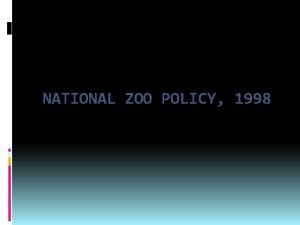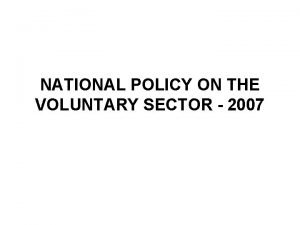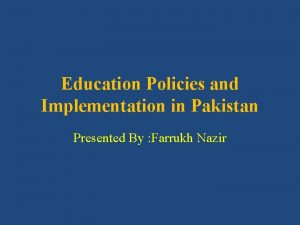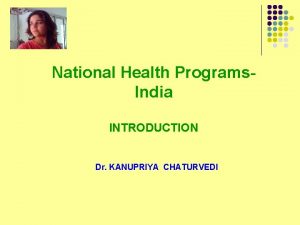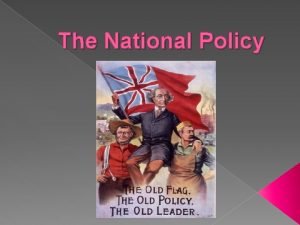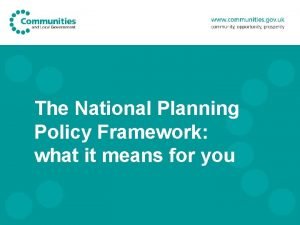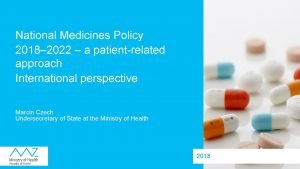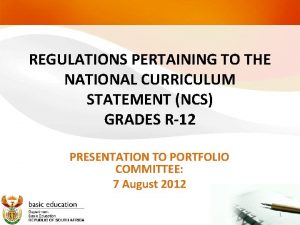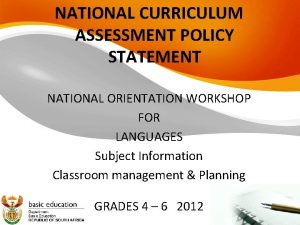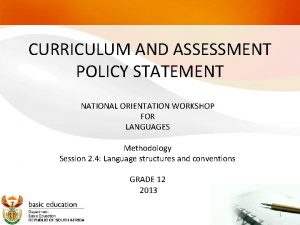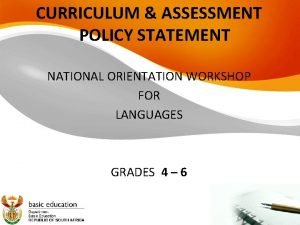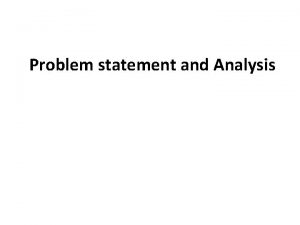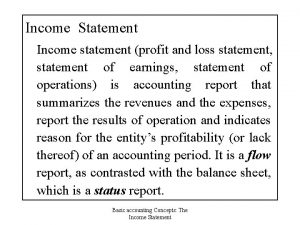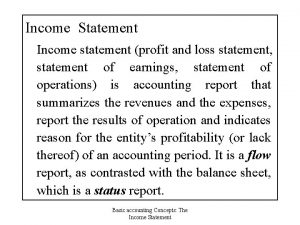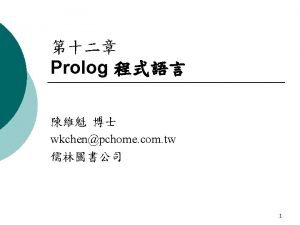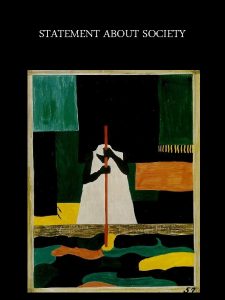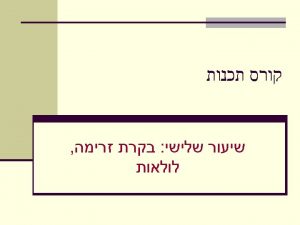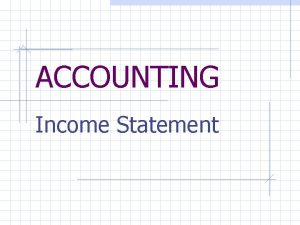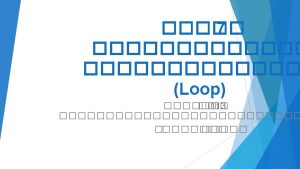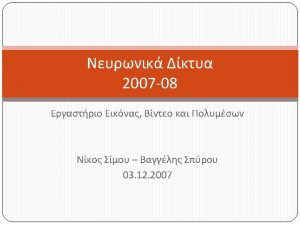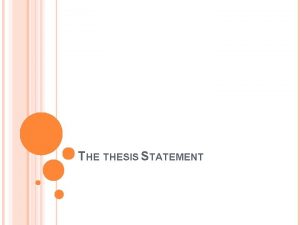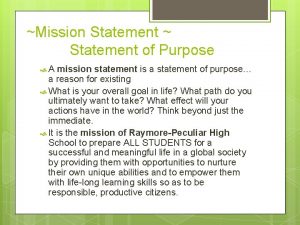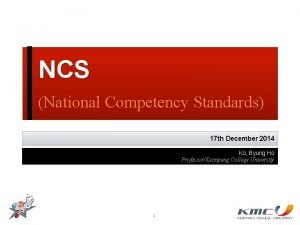National Curriculum Statement NCS Curriculum and Assessment Policy




















- Slides: 20

National Curriculum Statement (NCS) Curriculum and Assessment Policy Statement (CAPS) Orientation Programme: February 2012 INTERMEDIATE PHASE (grades 4 -6) LANGUAGES 9/29/2020 1

Language as a subject • 2011 ANA data: gr. 6 (7) PROVINCE LANGUAGES MATHEMATICS EC 29 29 FS 23 28 GP 35 37 KN 29 32 LP 21 25 MP 20 25 NC 27 28 NW 22 26 WC 40 41 SA 28 30

GETTING TEACHING AND LEARNING RIGHT!!! 3

Time allocations of Language levels. • Of the 27, 5 hours subject Hours Home Languages 6 FAL 5 SAL 1. 5 (NOT FROM 27. 5 HRS)

Time allocation, weighting and requirements Time allocation: HL (6 hrs) FAL (5 hrs) Home Language First Additional Language Skills Time allocation per cycle (12 h) % Time allocation per cycle (10 h) % Listening & Speaking 2 17% 2 20 Reading & Viewing (Comp+ Lit) 5 42% 5 50 Writing & Presenting 4 33% 2 20 Lang structures & conventions 1 (integrated) 8% 1 10 5

Time allocation, weighting and requirements Time allocation: SAL (1. 5 hrs) Second Additional Language Skills Listening & Speaking Time allocation per cycle (h) % 75 mins 42 (40) Reading & Viewing (Comp+ 55 mins Lit) 31 (30) Writing & Presenting 35 mins 19 (20) Lang structures & conventions 15 mins 8 (10) 6

SKILLS • Listening and Speaking (Oral) • Writing and Presenting • Reading and Viewing • Language Structure and conventions →contextually done IN 7

Language Teaching Approaches • A Text-Based • Communicative • Process Orientated Approach • The text-based and communicative approach are both dependent on the continuous use and production of texts 8

Text Types • GROUP ACTIVITY • Refer to p 25 in the CAPS HL document, to the 2 -week cycle Teaching Plans and to any of the Workbooks • You have 2 minutes to list as many TEXT TYPES onto a flip-chart as you can • The group with the longest list at the two minute cut-off wins • Display the flip-charts 9

Reading and Viewing: • The text-based approach enables learners to become competent, confident and critical readers, viewers and designers of text. • Through critical interaction with text, learners develop the ability to evaluate texts. • Vocabulary and language conventions should be taught in context as other language skills are taught and developed. • Through interaction with a variety of texts, learners extend their use of vocabulary and correctly apply their understanding of Language Structures and Conventions

Pre-Test : Reading Methodologies INDEPENDENT ACTIVITY: Define the following: • Shared Reading • Paired Reading • Group Guided • Silent Reading • Reading aloud • Independent Reading 11

Reading and Viewing: Reading Process In pairs • Identify the Skills, Contents and Strategies from the policy document : (p 17) • Which strategies could be used in other subjects across the curriculum? • Give examples

Reading and Viewing Strategies • • • Skimming for main ideas Scanning for supporting detail Using contextual clues to infer meaning Rereading Summarizing Clarifying Making inferences Explaining writer’s point of view Drawing conclusions/own opinion

Activity 18: Reading and Viewing: The Reading Process • The reading process consists of the pre-reading, reading and post reading stages. The activities the learner will be engaged in can be summarised as on p 10.

Reading and Viewing Read page 10 of the HL policy • Brainstorm suggested activities during each stage of the reading process • Read a text from any of the Workbooks. Design suggested activities for each stage of the reading process • Also brainstorm how you would introduce new words, as well as language structure and use Group 1 – 4: Pre-reading Group 5 – 8: During reading Group 9 – 13: Post reading

Reading and Viewing C – CAPS A – ANAs W – Workbooks I – Infrastructure • Classroom Resources What resources are needed for teaching Languages in the BLACK BOX? ? ? • List and give feedback

DIFFERENTIATION • How does a teacher support diversity in the reading class? • Refer specifically to reading comprehension

Activity 19: Reading and Viewing • Discuss how to teach the following features of literary genres: 1. 2. 3. 4. 5. Plot Background and setting Characters Themes/messages Identify similarities and differences between different literary genres

It’s about them!

THANK YOU 20
 Ncs curriculum list
Ncs curriculum list Ascoulor
Ascoulor Z-009-3:2015 ca06 jawapan
Z-009-3:2015 ca06 jawapan Ncs.com vn
Ncs.com vn Hvad er ncs farver
Hvad er ncs farver Ncs slogan
Ncs slogan Ncs compound
Ncs compound Bcl lewis structure
Bcl lewis structure Ncs
Ncs Cisco ncs
Cisco ncs National policies related to child health and welfare
National policies related to child health and welfare National zoo policy
National zoo policy Existanxe
Existanxe National policy on the voluntary sector 2007
National policy on the voluntary sector 2007 National education policy 1998
National education policy 1998 National health policy 2002
National health policy 2002 Dr. kanupriya chaturvedi
Dr. kanupriya chaturvedi The national policy
The national policy What is national planning policy framework
What is national planning policy framework National medicines policy
National medicines policy Conclusion of npe
Conclusion of npe

